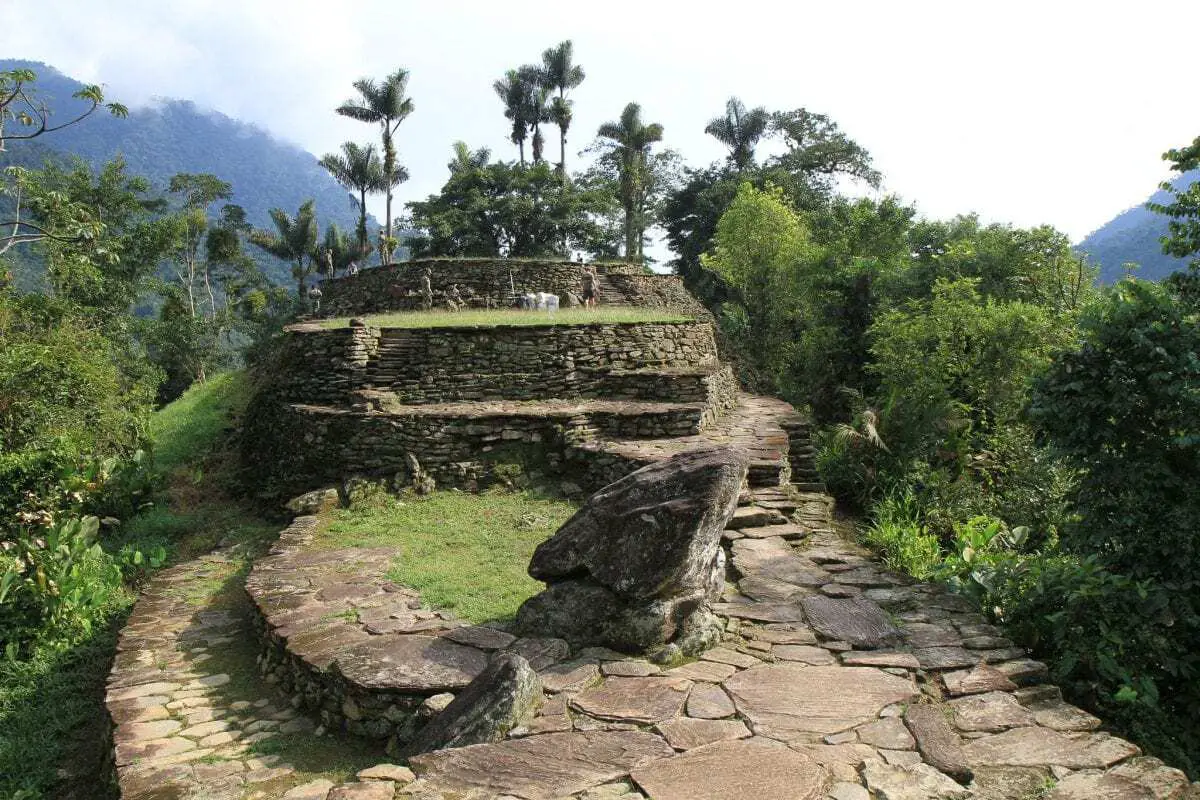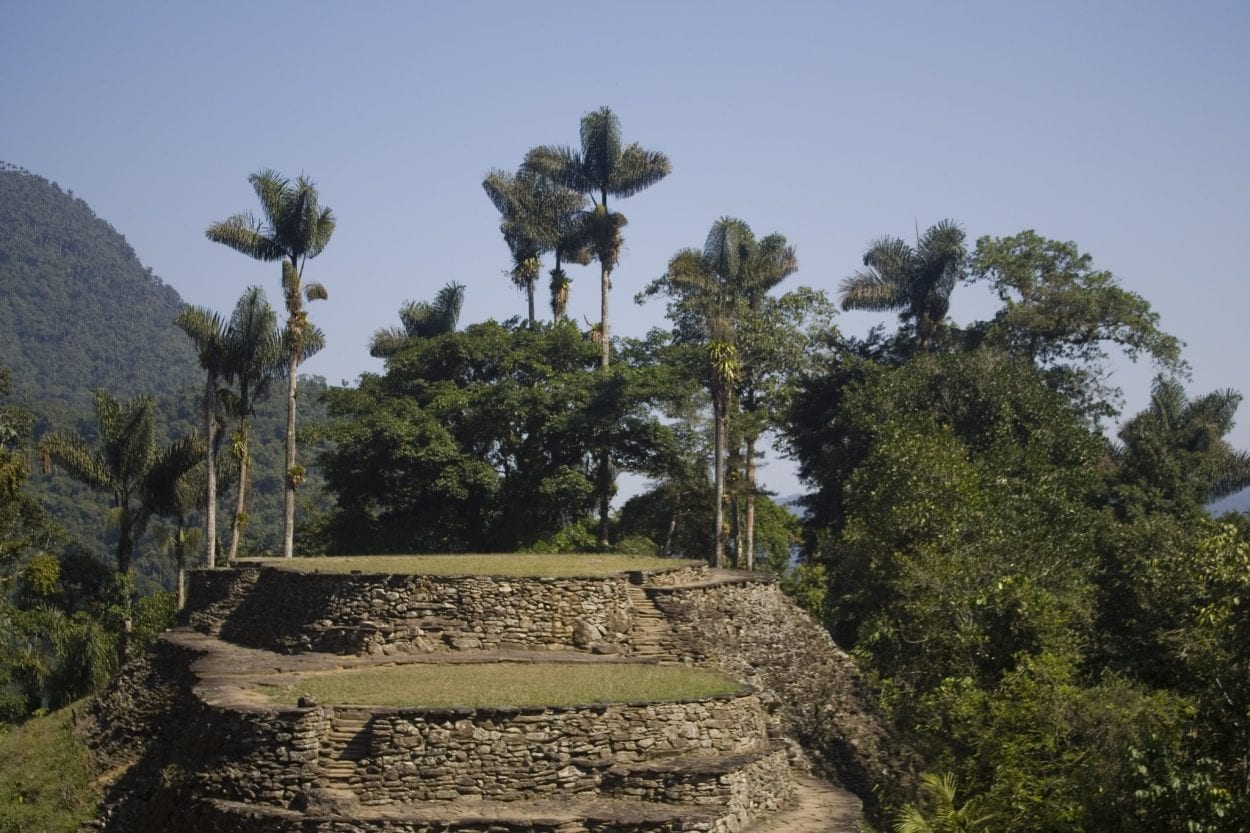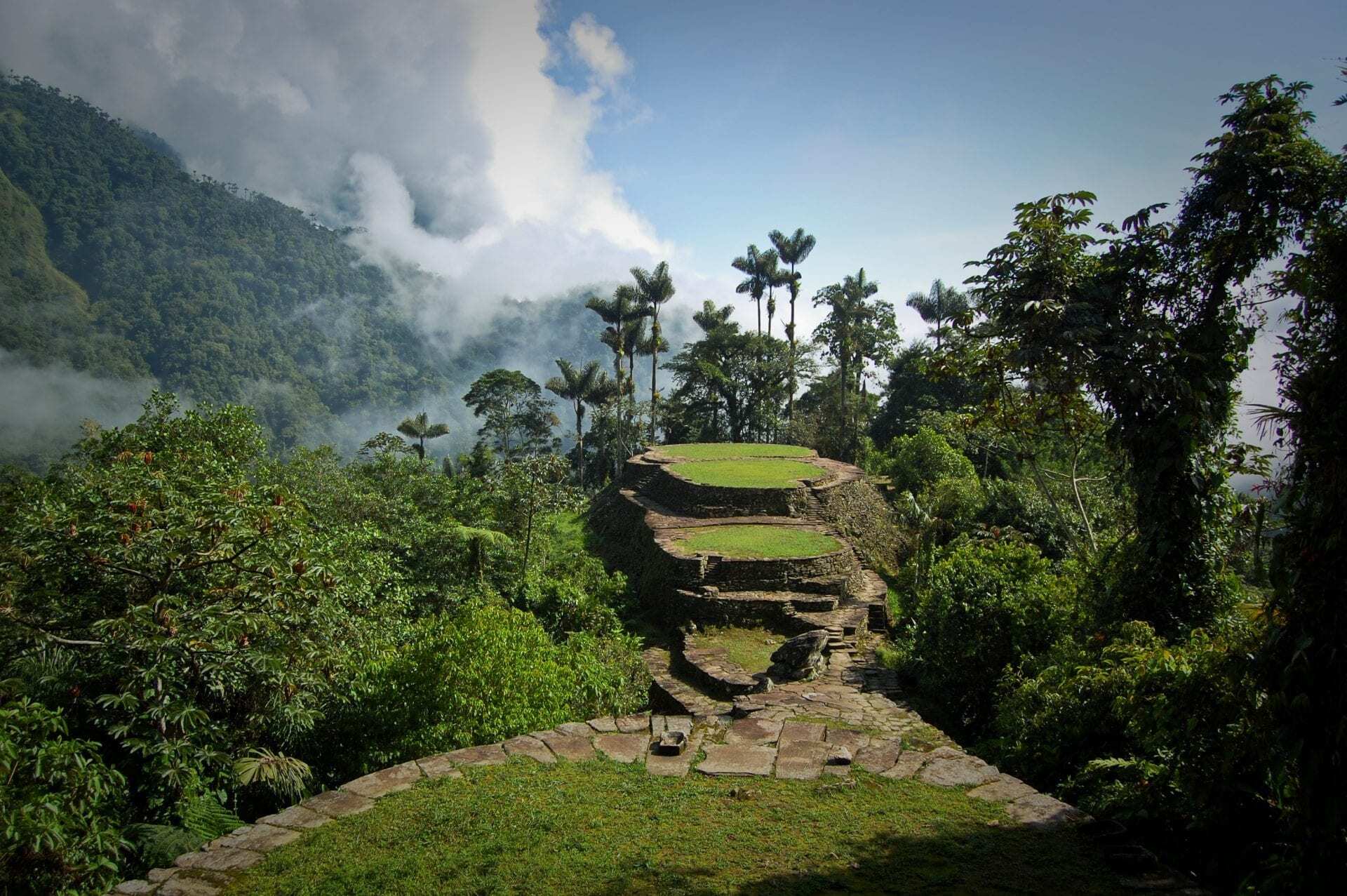Ciudad Perdida, translated in Spanish as the “Lost City”, also known as “Teyuna” and “Buritaca” locally is an archaeological site in the jungles of the Sierra Nevada de Santa Marta in Colombia.
Archaeological evidence suggests that the city was founded around 800AD by the Tayrona (also spelt Tairona), a Pre-Columbian culture that first occupied the region at the beginning of the 1st millennium AD and founded around 250 settlements.
Ciudad Perdida most likely served as the region’s centre, supporting a population of around 2,500-3,000 inhabitants.

Archaeologists have discovered over 200 structures, mainly constructed with timber on 169 terraces, connected by a network of flagstone roads and several small circular plazas that covered an area of over 30 hectares (80 acres).
The terraces were constructed using a combination of rammed earth and masonry, capped with stone to ensure a stable foundation and prevent erosion. Archaeological evidence suggests that the Tayrona cultivated maize, beans, sweet potato, yams and avocados as a staple diet.
Ciudad Perdida was abandoned after the 16th century, shortly after the arrival of the Spanish and was subsequently swallowed by the jungle. The reason for the abandonment remains elusive, but around the same time the Spanish explorer Gonzalo Fernández de Oviedo arrived in the Bay of Santa Marta in 1498.

Although described as lost, some of the indigenous tribes in the region (Arhuaco, the Koguis and the Wiwas) claim to descend from the Tayrona, always knowing of the cities existence and continued to see the site as sacred and a place of pilgrimage.
Ciudad Perdia first became known to the outside world when treasure hunters and looters (known in Colombia as “guaqueros”) descended on the site, robbing much of the archaeological legacy of the Tayrona.
When gold figurines and ceramic urns from the city began to appear in the local black market, archaeologists headed by the director of the Instituto Colombiano de Antropología reached the site in 1976 and placed Ciudad Perdia under the state’s protection.
Ongoing work today by the Global Heritage Fund (GHF) has been working in Ciudad Perdida to preserve and protect the historic site against climate, vegetation, neglect, looting, and unsustainable tourism.
Header Image Credit : Rory MacLeod







